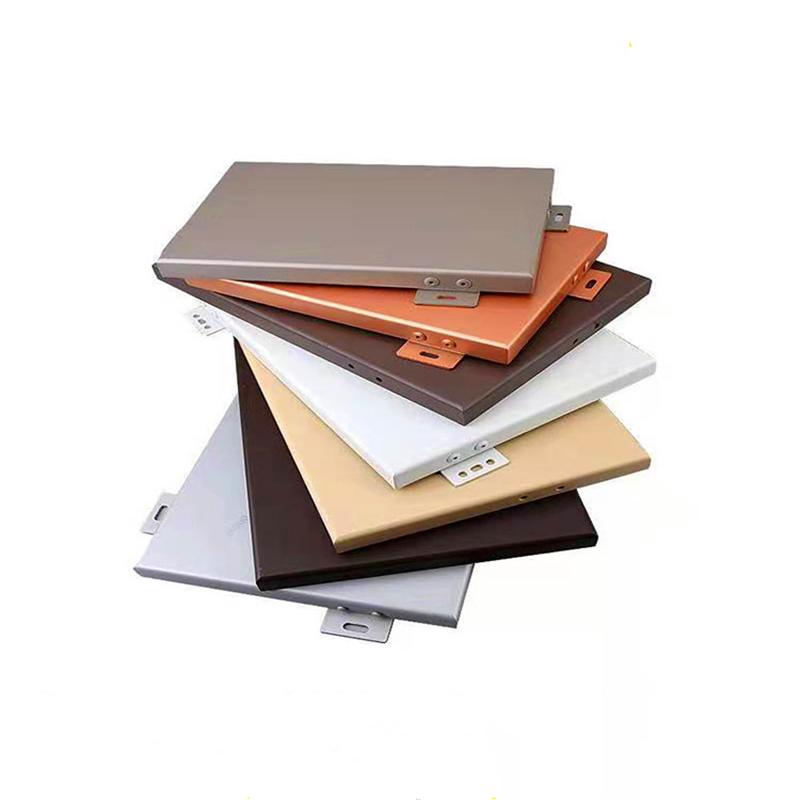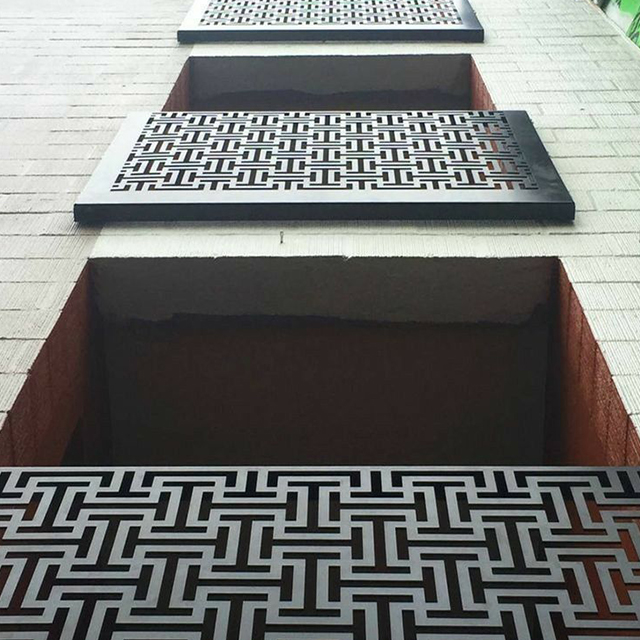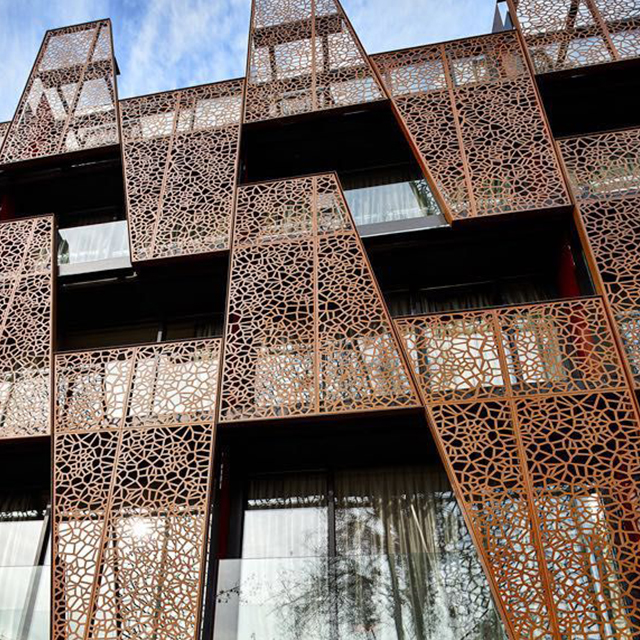In architectural decoration, calculating aluminum veneer is a crucial step, especially for large exterior wall projects like curtain walls. Below are some commonly used formulas for calculating the area, weight, and cost of aluminum veneer materials.

1. Calculation Formula for Aluminum Veneer Area
The area of an aluminum veneer is usually calculated based on its length and width, with the following formula:
Aluminum Veneer Area (㎡) = Length (m) × Width (m)
- For regular rectangular or square aluminum veneer panels, this formula can be directly applied.
- For irregular shapes, the area needs to be calculated in segments according to the design drawings, and then the total area is the sum of all parts.

2. Calculation Formula for Aluminum Veneer Weight
To calculate the weight of an aluminum veneer, you need to know its thickness, density, and area. The density of aluminum is typically 2.71 g/cm³, and the formula for weight is:
Aluminum Veneer Weight (kg) = Length (m) × Width (m) × Thickness (mm) × 2.71 (g/cm³)
Note: The thickness unit is in millimeters (mm), which needs to be converted to meters to keep the units consistent (1 mm = 0.001 m).
Example:
- For an aluminum veneer panel with dimensions of 2 meters × 1 meter and a thickness of 3 millimeters, the weight would be:
2 (m) × 1 (m) × 0.003 (m) × 2.71 = 16.26 kg
3. Calculation Formula for Aluminum Veneer Unfolded Area
During processing, aluminum veneer often undergoes bending, and it’s important to calculate the unfolded area. The unfolded area refers to the flat area before bending and can be calculated by adding the area of the bent parts.
Aluminum Veneer Unfolded Area = Actual Panel Area + Bending Area
The bending area is determined by the height and number of bends based on the design.
4. Calculation Formula for Number of Aluminum Veneer Panels
If you know the total area and the area of a single panel, you can calculate the number of panels required with the following formula:
Number of Aluminum Veneer Panels = Total Area (㎡) ÷ Single Panel Area (㎡)
Example:
- If the total decorative area is 1000 square meters and each panel has an area of 2 square meters, then the required number of panels would be:
1000㎡ ÷ 2㎡ = 500 panels
5. Calculation Formula for Aluminum Veneer Cost
The price of aluminum veneer is usually based on the price per square meter:
Total Cost = Price per Square Meter (RMB/㎡) × Total Area (㎡)
Example:
- If the price per square meter is 200 RMB and the total area is 1000 square meters, the total cost would be:
200 RMB/㎡ × 1000㎡ = 200,000 RMB
6. Impact of Aluminum Veneer Thickness on Weight
The thickness of aluminum veneer directly affects its weight and cost. Common thicknesses are 2mm, 2.5mm, and 3mm. In general, the thicker the panel, the heavier it is, and the higher the cost. Therefore, it is important to choose the appropriate thickness based on the specific use case during the design phase.
Summary
Using these formulas, you can easily calculate the area, weight, number of panels, and total cost of aluminum veneer materials, helping you plan and budget accurately for architectural projects. For more complex calculations or irregular shapes, it is advisable to refer to detailed design drawings or use professional tools like CAD for precise measurements and calculations.
If you need further explanation or project-specific calculations, feel free to let me know!

